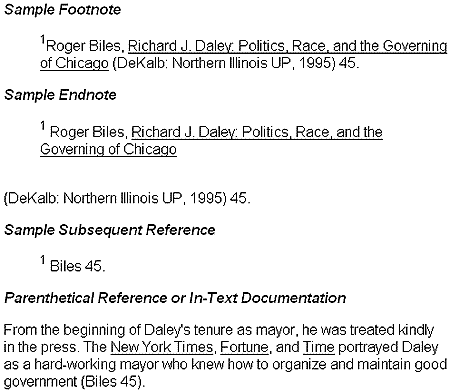Have you been asked to write a research paper, but you are unsure of when and how to document sources? If so, use the following guidelines as to when to cite sources:
Perhaps, after that explanation you may fear that documentation is required for nearly every idea or concept. In actuality, information which is common knowledge, such as the dates of the Civil War (1861-1865), does not require documentation. While it is necessary to acknowledge the author of a famous statement, such as Patrick Henry's "Give me liberty or give me death," you do not need to include additional documentation. Also, if you have read the same material repeatedly, you may consider the material common knowledge within the subject area. In that case, you may decide not to document the information. Remember that if you seriously question whether you should document the material, you should cite it, for it is far better to over document than to under document and be accused of plagiarism.
What type of documentation should you use in your paper? It is important for you to know which type of documentation is required for your research paper. Your instructor is your best guide in this matter, so remember to ask. Some instructors require footnotes, while others prefer endnotes or parenthetical references (in-text documentation).
Footnotes and endnotes use the same basic format except that footnotes are single-spaced at the bottom of the page on which the source is cited, and endnotes are double-spaced on a separate page after the paper but before the Works Cited or Works Consulted page. Remember to give full bibliographic data when citing a source for the first time, but use the shortened version with the author's surname and the page number for subsequent times. However, if you are using parenthetical references or in-text documentation, use an open parenthesis followed by the author's surname and page number and then close the parenthesis.
